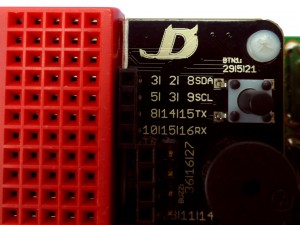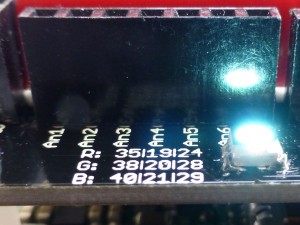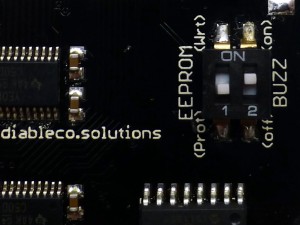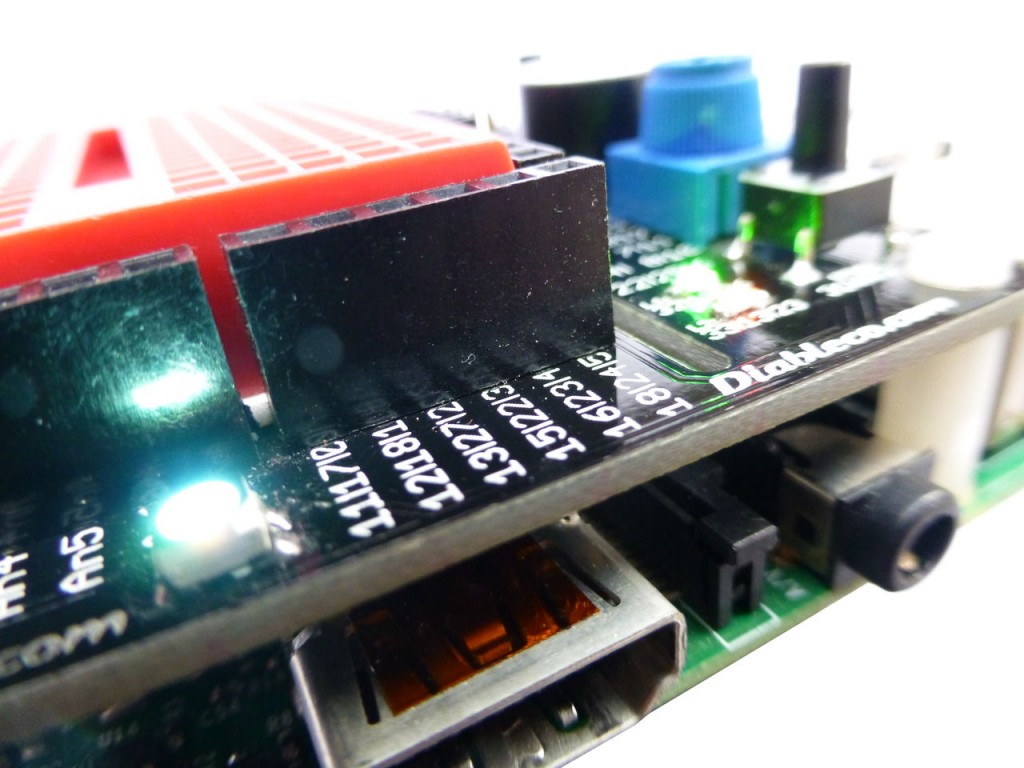raspiPRENDE is used to start on electronics quickly.
In few minutes with the raspiPRENDE HAT (HAT=Hardware Attached on Top) is achieved operate and program the inputs/outputs (I/O) more common in Electronics. It’s perfect if you want to learn how to handle LEDs, buttons and basic electronics without the use of wires (there is nothing to assemble or solder).
The accompanying manual tells you how to start with the basics of programming, starting with the digital outputs (LED, buzzer) and inputs (buttons, light sensor).
-
Wires are included
-
Plug and learn
All the material necessary to operate are included, just plug a Raspberry Pi (works with any 40-pin model, that is, any subsequent model 2014).
The HAT raspiPRENDE can be used from your own Raspberry Pi or remotely (on the manual is explained how to do make the remote access).
Protected ports: Available ports lead a electronic protection to avoid damaging the Raspberry Pi during your tests. If you like wires your Raspberry is safe.
-
Printed help
All ports are marked with 3 numbers, you can use any resource for GPIO ports without conversion tables to use the port because you will have all of them!
The numbers are: Physical pin number (#), Broadcom nomenclature of GPIO (BCM) and WiringPi (WPi).
All of them are included for every PIN or component in the raspiPRENDE HAT.
-
Physical PIN, Broadcom and WiringPi numbers
Analog→Digital (10bit ADC): The HAT comes with a 8 port converter (1 for potentiometer and 7 in the connector marked as AnX), because the Raspberry Pi does not include this feature we added for you.
It comes with the Microchip MCP3008 which works in SPI mode, so it is used to learn how to use the SPI ports (on the manual is explained how to use the SPI hardware and SPI software).
-
Features
The HAT have this physical interfaces:
- 2 Buttons (digital input)
- 2 LED: green and red (digital output)
- 1 RGB LED (up to 7 different colors)
- 1 Buzzer (can be manually disabled)
- Potentiometer connected to the converter ADC
- 16 digital PIN for use in breadboards
- 7 ADC (10bit) ports available
- 20 PIN for Power (male and female socket)
-
Support
You can program using any system that works with GPIO, it is included:
Python with GPIO module
WiringPi (installation needed: official webpage)
Linux Terminal commands
GPIO Zero or any other system must work without any troubleThere is a learning guide available in Spanish.
HAT EEPROM: For advanced users, the EEPROM can be reprogrammed (by default it comes with all I/O ports properly configured), the manual tells you step by step how this reprogramming can be done. The programming mode is protected by a physical switch, your memory is safe of an accidental erasing. The “Buzzer” switch is used to disable from an accidental noise providing you a “silent” mode.
-
Shop it
Do you want to wire? The kit on our shop also includes 5 thought hole components: 3 resistors, 1 LDR and 1 LED
-
Kit contents
HAT raspiPRENDE with all components
4 Nylon Spacers with their Screws
Mini breadboard
6 Jumper wire (M/M) for the breadboard
(Raspberry Pi is not included)




